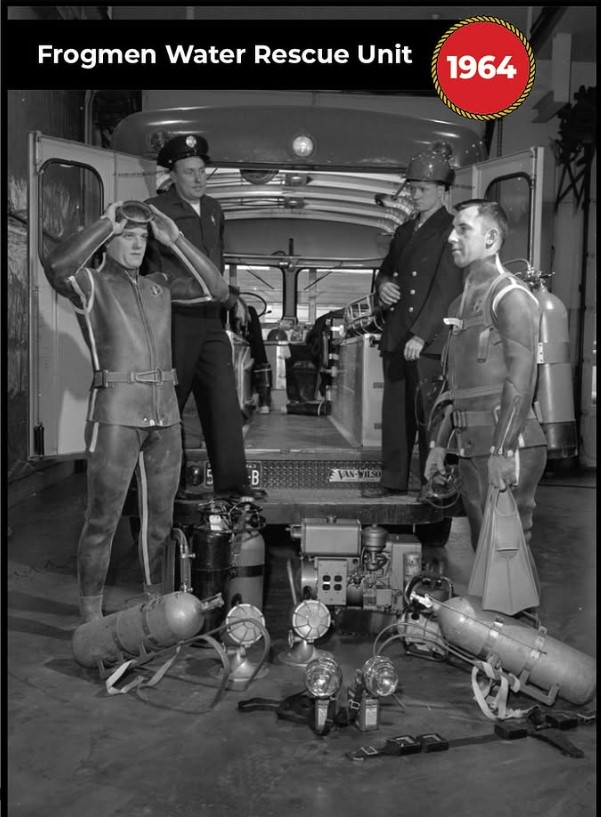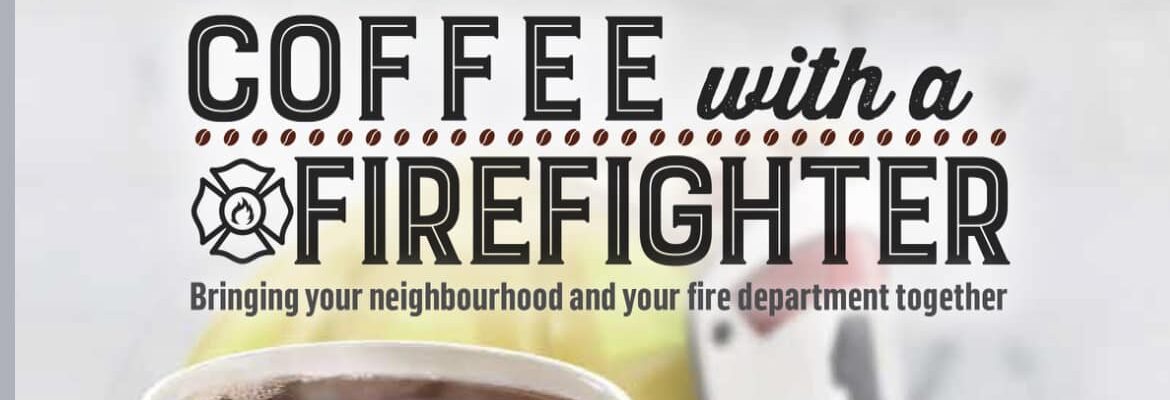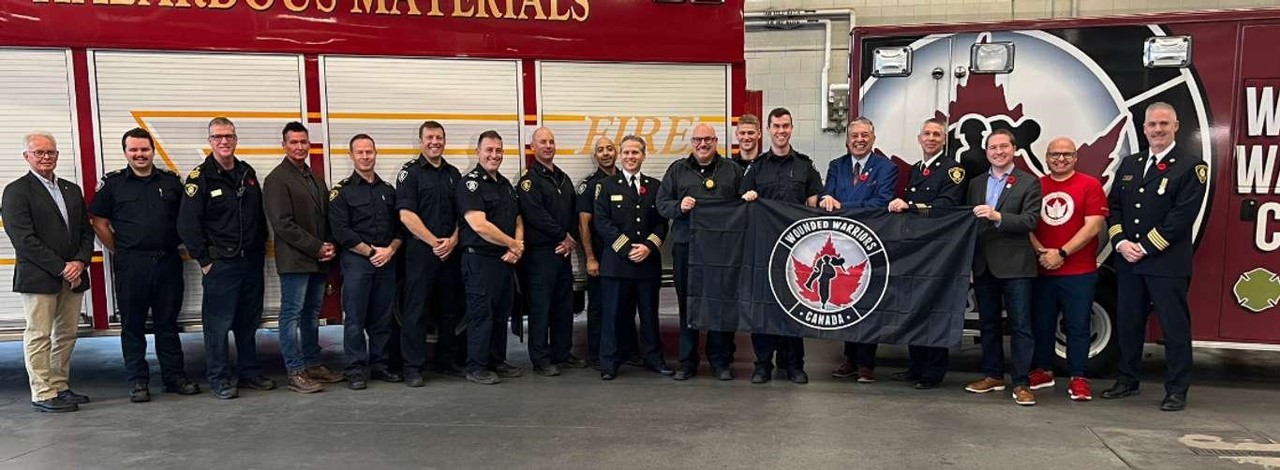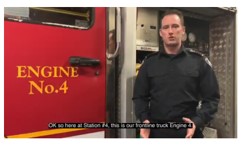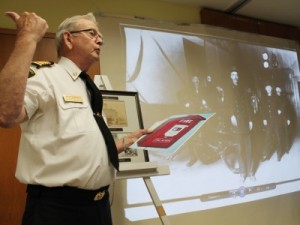
Retired London fire chief Jim Fitzgerald gave a presentation to about 40 people Thursday (May 17) on the history of firefighting in London with a focus on the former Fire Hall No. 5, which was located on Adelaide Street.
During the early days of firefighting in London, the fire department was also an insurance company.
If a home did not display a plaque indicating it was insured through the department and a fire broke out, firefighters would let the house burn down.
This was one of the stories retired London fire chief Jim Fitzgerald, 77, shared with a crowd of roughly 40 people during a presentation Thursday evening (May 17) at the Crouch Library on the history of firefighting in the Forest City.
The discussion was hosted by the Hidden History of Hamilton Road community organization.
The focus of Fitzgerald’s presentation, which included a sideshow and London Fire Department artifacts dating back to the 1800s, was on Fire Hall No. 5, where four generations of his family served as firefighters.
“We had a lot of good fires down there, didn’t we John?” he asked of John Clarke, who had served as Fitzgerald’s driver at the fire hall and who came to hear his former chief’s discussion.
Fire Hall No. 5 was located at 155 Adelaide St. and serviced the Hamilton Road area, SoHo and the Old East Village.
Fitzgerald said it was built in 1909 when the chief at the time decided two new halls were needed to meet the firefighting needs of the growing city.
He went to the hall in 1976 and served there until his retirement on Oct. 31, 1993.
Fitzgerald, who had served as a firefighter since 1955, said his last day at the hall was an emotional one.
“I had tears in my eyes,” he said as he displayed a photograph taken of him the day he retired.
Fitzgerald’s grandfather, father and son also spent time fighting fires out of Fire Hall No. 5 before it closed in 1997.
He said he would have liked to have seen the building turned into a firefighting museum for the city, especially since he has a collection of London Fire Department photographs and artifacts which needs a permanent home.
The crowd that came out to the presentation, which coincides with the 100th anniversary of the London Fire Department receiving its first motorized truck, was also very interested in how aspects of firefighting have evolved over the past 170 years.
One of the questions a member of the audience asked Fitzgerald had to do with the fire alarm boxes that were once scattered across the city.
The first boxes, he said, were introduced in London in the 1850s, but had a serious flaw.
The keys to the boxes, which alerted the department about fires throughout London, were kept at nearby homes or businesses.
“What happens if the store’s closed?” Fitzgerald said. “What a crazy idea.”
The boxes were upgraded so people didn’t need a key to open them to set off the alarm.
Instead, Fitzgerald said, the boxes were fitted with pieces of glass over the handle to prevent improper use and a person could break the glass with a stone to activate the alarm.
“Or, if a woman had high heels on, she could break the glass.”
Each box had a wheel that would cause a “gong” to sound at the nearest fire hall when the alarm was activated, Fitzgerald said.
For example, he added, the wheel was coded so that if the box was located in zone 65, the gong would sound six times, followed by a space, and then five more gongs, telling firefighters the blaze was in the area of Wellington Road and South Street.
Newer boxes installed in the mid-1970s had simple levers on them and were often located near schools, leading to a rash of multiple alarms at the hands of mischievous students.
When asked how the department dealt with such pranks, Fitzgerald said the department came up with the idea of coating the levers with a substance that would make the fingers of whoever pulled it turn orange or red for days.
If there was a false alarm, he added, the department would phone the principal of the nearby school and have him or her ask the teachers to have students stand up and show their hands.
“That’s how we caught them.”
Fitzgerald was treated to a special surprise during his presentation as the granddaughter and great-granddaughters of former fire chief John Aitken dropped in to hear him talk.
Aitken had hired Fitzgerald’s father in 1927.

